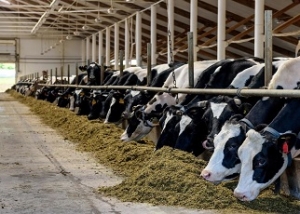Dairy in the World
Idaho’s Dairy Growth Has Been Dampened by Economics

However according to Rick Naerebout, CEO of Idaho Dairymen’s Association Inc., for the first time in a long time, production growth will likely come to a halt due to the financial stress and the negative margins producers out west are experiencing right now.
“We lose about 10% of our membership a year,” he says, noting that it’s common for smaller dairies not to have the next generation onboard to take over the operation. “They’ve moved on.”
However, Naerebout shares that while smaller facilities are the ones that have typically fallen off in a downturn, medium-sized and bigger operations are now also struggling.
“To face liquidation right now is very uneasy, and you just don't know how that might play out,” he says.
Idaho’s dairy industry has been in a growth mindset for three decades and Naerebout says while there will still be growth, it certainly won’t be at the pace the state has grown accustomed to.
Comes Down to Water
While Idaho likes to banter with Texas when it comes to production, Naerebout notes that the Lone Star state has never surpassed Idaho in a full-year average production. He is also quick to point out that when it comes to resources, especially in the long run regarding water, that is what will slow down or drive production on dairies across the U.S., not just in Idaho or Texas.
“Texas sits on the Ogallala and they're in a tough place because there's not a way to recharge that aquifer,” he says, noting that the majority of Idaho’s dairies sit on the Eastern Snake Plain Aquifer. “It is depleting, but we have the means to recharge it with surface water coming from the mountains.”
Texas milk production growth has steadily grown over the last two decades. According to Juan Piñeiro, Assistant Professor and Extension Dairy Specialist with Texas A&M, Texas’s milk production has increased an impressive 190%, going from 5.1 billion to 14.8 billion lbs. from 2001 to 2020.
The expansion of milk processing capacity and new plant construction in the Panhandle has spurred the increase in both cow numbers and production that Texas has seen.
Back in Idaho, Naerebout says genetics have played a big role in helping Idaho producers get more out of their cows and more strategy goes into which cows or heifers gets bred to sexed versus beef semen. He is quick to say that there is nowhere near enough margin in dairy, nor will consumers pay significantly more for all the innovations, like new management practices and technology to reduce greenhouse gases. Revenue for that will need to come from other sources outside the milk check.
“Truthfully it all costs money and there's not enough money in the milk check for producers to dial into everything,” he says.
Looking at balance sheets will be a tough conversation between dairies and lenders in 2024 and Naerebout says liquidations will unfortunately occur.
“If producers can make it through this year, that will be good,” he says. “It’s hard to think long-term when you’re faced with dire economic situations.”























